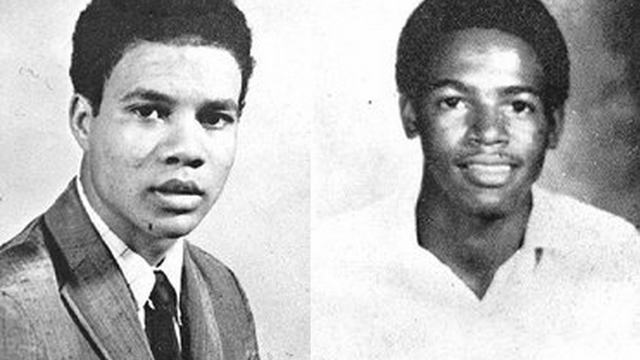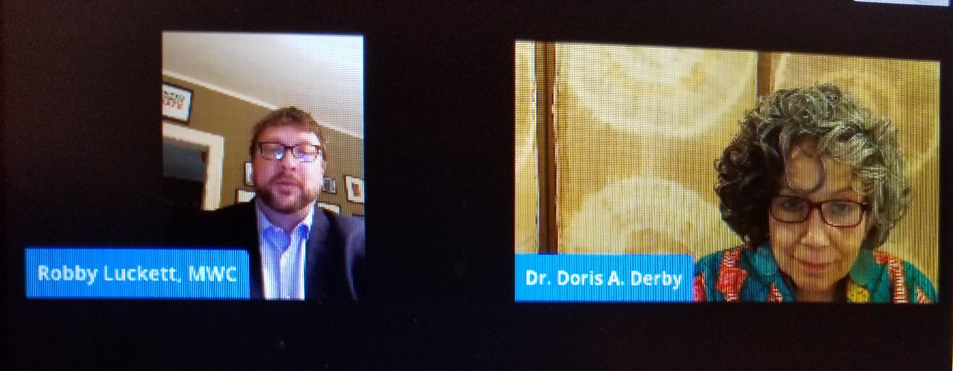
By Janice K. Neal-Vincent,
Contributing Writer,


During the spring of 1970 student protests and demonstrations were rampant throughout American campuses against racism and repression, the Vietnam War and discrimination against women and minorities in education.
John R. Lynch Street was a clearway for linking west Jackson to downtown.
In May white car drivers and their passengers rode through the campus of Jackson State College on Lynch Street and harassed students with racial slurs, accelerated speeds, object throwing and hit-and-runs. Students protested against these harassments.
Despite the unrest, within the walls of Jackson State College students and faculty were engaged in final preparations for examinations of the spring quarter on May 14, 1970. Some were in dorms or on campus grounds beyond the Lynch Street side.
Conflicting accounts of rioting were reported. Then on May 15 around 12:05 a.m., police opened fire that scattered students among trees, Henry T. Sampson Library and Alexander Hall West Dorm. When the shots that lasted for approximately 30 seconds ended, 21-year-old pre-law major and father Phillip Lafayette Gibbs, lay dead within 50 feet of Alexander West Hall. Jim Hill High School student James Earl Green, 17, lay dead in front of B. F. Roberts Dining Hall.
Over 400 bullet holes plunged into Alexander West Hall, twelve JS students were injured and several required treatment from shattered glass and shock.
On Thursday, Feb. 6, Associate Professor and Director of the Margaret Walker Center, Robert Luckett, conversed with Doris Derby regarding her exhibit which covers the tragedy during a virtual gallery talk.
“Police wanted JSU to clean the building. Students maintained the vigil to get the FBI to investigate so the crime scene would not be disturbed,” she recalled. At the time Derby was a civil rights activist and photographer for the Institute for the Study of the History, Life and Culture of Black People which was founded by Margaret Walker in 1968.
“It was a long process, spending 10-12-15 hours weekly for approximately 7 months. I have memories of all the people and circumstance,” she said. The artist opened the exhibit with credence to Lawrence Jones who founded the JSU Art Department and attended many activities of the social justice movement.
“When I came to Mississippi, I brought my camera. I documented images (not just this incident, but all of the events that followed) because history books left us [blacks] out,” Derby contended.
Luckett noted that the MWC has virtual recordings of the various phenomena referencing the protests. “Families never received any kind of compensation. What happened that night was plain murder.”
Derby injected that the COFO building was the heart of Mississippi where action for the movement took place. The Masonic Temple was down the street from it. “This was a place for groups and organizations to have all kinds of events,” she continued.
The artist added that on the scene were many groups (black and white, young and old, church and unchurched), news reporters, Congressman John Conyers, Vernon Dahmer, Medgar Evers and other civil rights activists who gave support and demonstrated that they were “outraged” but not afraid.
“You had to be aware of your surroundings at all times because you could be beaten and killed. If you traveled in a car or in a group you could be stopped, Derby mentioned.
Referencing Green’s funeral procession, Luckett asserted that the young were being molded by their surroundings. He then appealed to listeners to contact the center if they knew names of children in the porch scene photo. Today these children would perhaps be in their 50s.
Derby reminisced: “People had a long way to walk to the cemetery near Jim Hill High School. A lot of people were outside standing and on porches, as well as those inside who were watching.”
Luckett made it known that today’s students would not likely be aware that Gibbs-Green Memorial Plaza is a function of events that occurred “at the demands of students.”
Seeking advice for camera usage to capture events, Brandon Sherwood expressed curiosity. Derby recommended that student photographers take their cameras wherever they go and to be sure to have a backup. Since cellphones are popular, they are prime equipment. “Keep your day job, but be diligent and dedicated [in photography],” she maintained.
Derby indicated that her role within the civil rights movement stemmed from her family lineage. “We fought for our country, and we have to fight for our people. The black family must get involved and teach their children to get involved in what’s happening around them.”
Luckett announced two new awards from MWC: (1) The Annual Doris Derby Visual Arts and Social Justice Award, a $500 prize to a student from any institution for best representation in visual arts; and (2) The Gibbs-Green Remembrance Award – $500 for the best student essay. The winners will be announced at the Annual Commemoration of Gibbs-Green Legacy May 14 and 15.
May 1970: The Gibbs-Green Tragedy at Jackson State College exhibition is installed in the Johnson Hall Art Gallery at JSU and runs through June 2021. Due to COVID-19 restrictions, contact the MWC at 601 979-3935 or view the gallery talk on Facebook.
The program and exhibition were financially assisted by the National Endowment for the Humanities through the Mississippi Humanities Council.
See photos page 6.

Be the first to comment